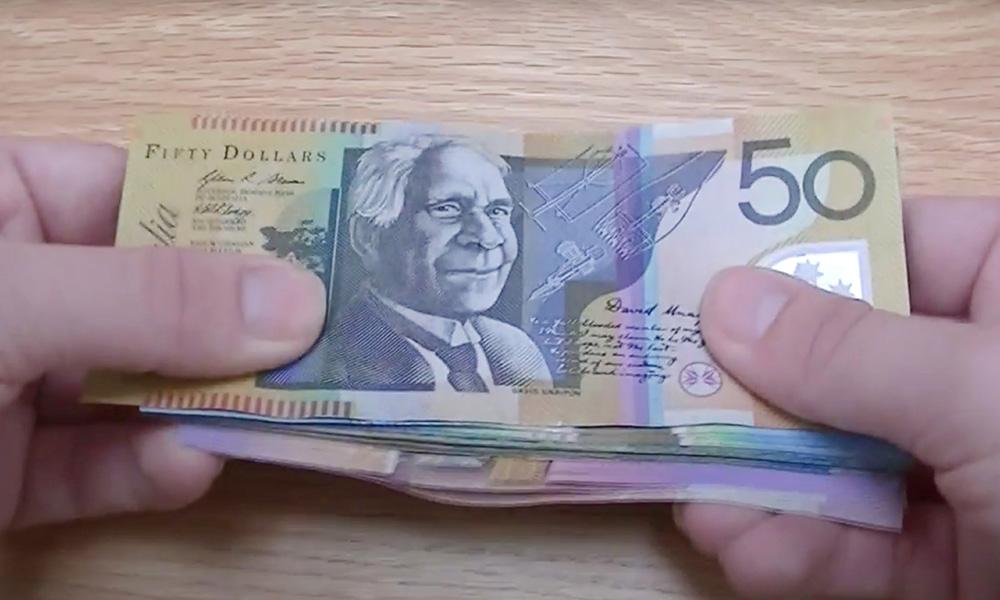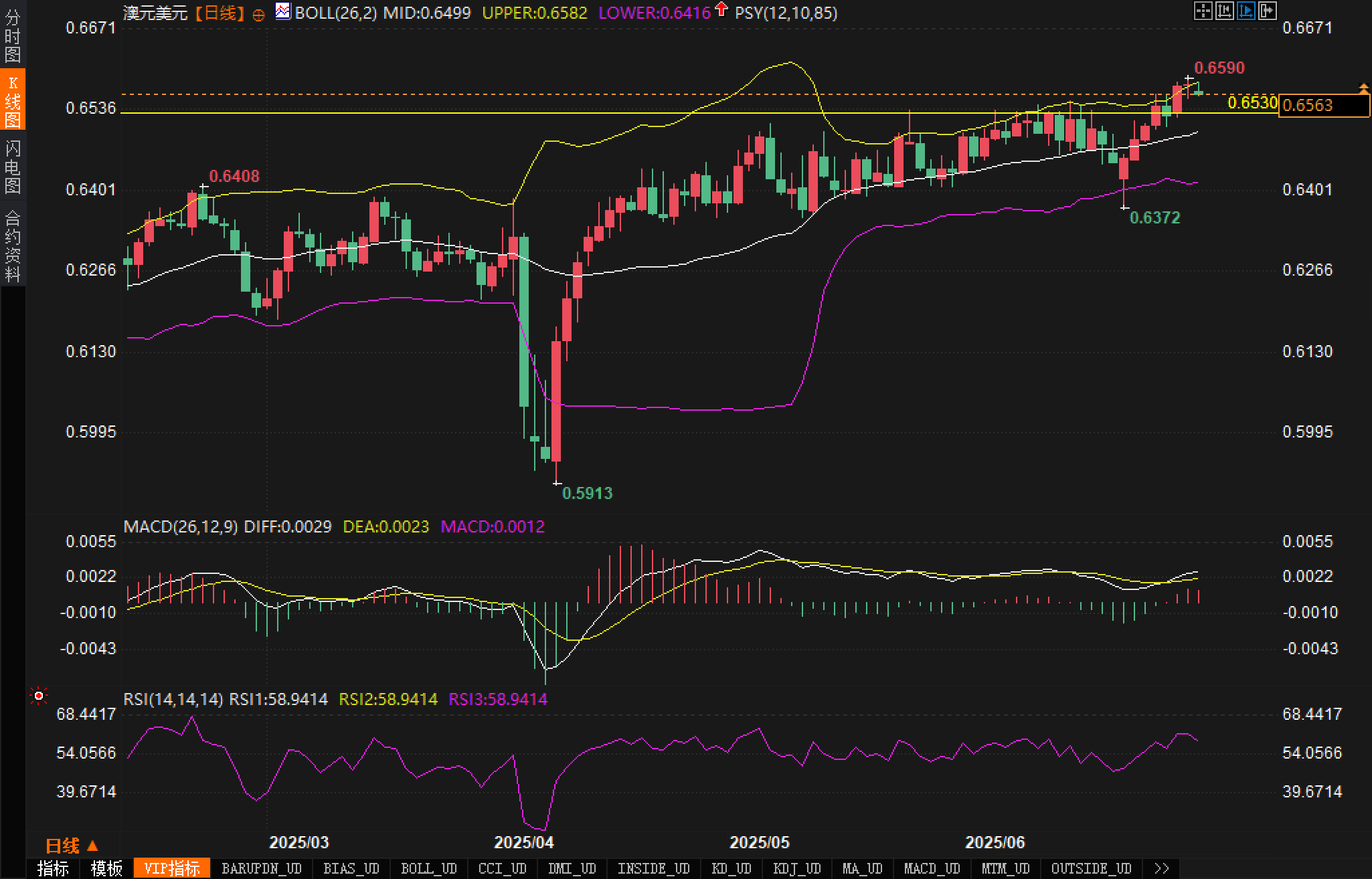The Australian dollar hits its high point this year. Is the pullback a trap or an opportunity?
2025-07-02 17:59:00

Fundamentals
Australia's latest retail sales in May recorded only 0.2% month-on-month, which was higher than 0% in April, but significantly lower than the market expectation of 0.4%, reflecting that the strength of consumption recovery is still insufficient. The current market expectation that the Reserve Bank of Australia (RBA) will cut interest rates again in July has increased, which has put a certain drag on the Australian dollar.
On the other hand, the US dollar showed signs of stabilization after a continuous decline. However, the recent dovish remarks of Fed officials have limited the rebound of the US dollar and also restrained the downside of the Australian dollar. In terms of interest rates, although Fed Chairman Powell hinted that whether there will be a rate cut in July still needs data verification, the market still puts the probability of a rate cut in September at more than 75%.
Geopolitical uncertainties still exist, which means that risk aversion still has a place in the foreign exchange market. The Australian dollar, as a typical risk currency, has emerged from a technical pattern of rising and then consolidating amid the swings in market sentiment.
Technical aspects:
Observing the AUD/USD daily chart, the exchange rate has rebounded from the low of 0.5913 to date, and has built a mild upward channel as a whole. It has recently successfully broken through the upper pressure of the Bollinger Band, reaching the year's high of 0.6590, confirming the breakthrough.

The current K-line has returned to the upper edge of the Bollinger Bands channel, and the Bollinger Bands channel has opened significantly, indicating that the exchange rate has entered a high volatility range. However, the latest K-line has a long upper shadow, reflecting that there is a certain resistance pressure above 0.6590, and there is a need for a short-term correction. Analysts believe that the first support is the 0.6530 area, and further support refers to the middle track 0.6499.
The MACD fast and slow lines maintained a stable operation above the zero axis. Although the red column showed signs of narrowing, there was no obvious sign of turning, suggesting that the bullish momentum of the exchange rate has weakened, but it has not ended. Analysts believe that if the subsequent MACD dead cross, we need to be alert to the exchange rate entering a phased correction channel.
The latest reading of RSI (14) is 58.94, which remains above 50 but has not entered the overbought area, suggesting that the exchange rate still has some upward momentum. Analysts believe that if it fails to break through the 65 level in the future, it may form a short-term top divergence, and be wary of a short-term rally.
Market sentiment observation
The current market is in a state of mixed bullish and bearish factors. On the one hand, the Australian dollar is suppressed by the RBA's easing expectations and weak economic data. On the other hand, the rebound momentum of the US dollar is also limited by the expectation of interest rate cuts. In this context, it is difficult for the exchange rate to rise overnight, but there is also bottom buying support on the downside.
Judging from the recent K-line trend, the bulls have not retreated significantly, but have chosen to fluctuate at high levels to accumulate momentum. The market is currently entering a short-term "emotional correction + trend relay" window period, and traders are more inclined to observe the upcoming ADP and non-agricultural data to determine whether a new round of trend will begin.
Outlook
In the short term, the exchange rate has shown signs of technical weakness after continuous rise, MACD column energy weakened, RSI was under pressure, indicating that the possibility of short-term top construction is brewing. Analysts believe that once the 0.6530 support is lost, it may trigger further technical retracement, and the target will be the 0.6499 support line of the Bollinger middle track.
In the medium term, the upward trend since the rebound from 0.5913 has not been broken, and the exchange rate is still running in the upward channel. The Bollinger Bands are open and the price is running above the middle track, which provides structural support for the bulls. Analysts believe that if there is no major negative interference in subsequent macro data, the exchange rate is expected to further challenge 0.6590 and look up to around 0.6630.
Overall, the analysis shows that the current exchange rate is in a short-term consolidation phase, but the trend structure still supports the continuation of medium-term bullishness. Traders are closely watching the market feedback after this week's non-farm data to determine whether the exchange rate is expected to re-accelerate the upward trend.
- Risk Warning and Disclaimer
- The market involves risk, and trading may not be suitable for all investors. This article is for reference only and does not constitute personal investment advice, nor does it take into account certain users’ specific investment objectives, financial situation, or other needs. Any investment decisions made based on this information are at your own risk.










